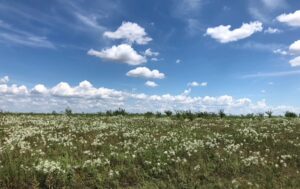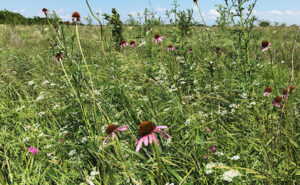2023 NPSOT/Dallas Chapter Field Trip
Field Trip October 14, 2023 at the Paul Mathews Prairie, Floyd TX


“On Your Own” Walks and Learning Opportunities
Focus (all or partial) on Native Plants and Habitats
Dallas: Bath House Cultural Center – https://bathhouse.dallasculture.org/
Dallas: Frankford Preservation Foundation – https://frankfordpreservationfoundation.org/
Dallas: Trinity River Audubon Center – https://trinityriver.audubon.org/
Cedar Hill: Dogwood Canyon Audubon Center – https://dogwood.audubon.org/
Combine: John Bunker Sands Wetland Center – https://wetlandcenter.com/
Denton: Clear Creek Natural Heritage Center – https://dentonparksfoundation.org/explore/clear-creek-natural-heritage-center
Fort Worth: Fort Worth Botanic Garden – https://fwbg.org/
Fort Worth: Fort Worth Nature Center & Refuge – https://www.fwnaturecenter.org/
Garland: Preservation Society for Spring Creek Forest – https://springcreekforest.org
Lewisville: Lewisville Lake Environmental Learning Area – https://www.llela.org/
McKinney: Heard Natural Science Museum & Wildlife Sanctuary – https://www.heardmuseum.org/
Plano: Connemara Conservancy – https://connemaraconservancy.org/
Plano: Environmental Education Center – https://www.plano.gov/596/Environmental-Education-Center
Other Outdoor Experiences
Arlington: River Legacy Living Science Center – https://riverlegacy.org/
Glen Rose: Fossil Rim Wildlife Center – https://fossilrim.org/
Past NPSOT/Dallas Chapter Field Trips
April 2015
Rosa Finsley and Kathy Power will be giving tours of the Frankford Prairie. Be sure and come see in person, then come to the meeting to hear how this jewel was rediscovered. Saturday, April 18th, @ 10am & Sunday, April 19th, @ 4pm 17400 Muirfield, Dallas, Texas 75287
February 15, 2014
John Bunker Sands – We joined the Blackland Prairie Master Naturalists Chapter for an overview of the center, a visit to a remediation site, and a guided walk along the boardwalk. More info on the center is available athttp://www.wetlandcenter.com/
April 20, 2013
Botanical Walk in Crystal Canyon – led by Jim Varnum. Crystal Canyon is currently undeveloped on 39 acres. It contains some very unique natural characteristics. Elevations within the park vary by 20 to 100 feet with a highly diverse geological profile. Marine shales, siltstones, mudstones containing inner beds of calcareous fossil clams, gypsum layers and fine grained sandstone suggest a near-shore marine environment might have existed here at one time. Preservation of these natural resources will be a driving force in park design and may lead to leaving it in its natural state.
May 22, 2012
Dogwood Canyon and Bruce Ballengee’s (a member’s) four acre back yard habitat in Cedar Hill. Randy Schoen from the new Audubon Center will guide us through part of Dogwood Canyon and about half way through we will come out into Bruce’s yard where he has identified more than 200 species of native plants!! Golden-cheeked warblers have been seen here!! The canyon will require some up and down, but is only about one mile of hiking. I’d surely have dragged my kids on it when they were little. This will be a great combination of really wild and some domesticated less wild fare. The Dogwood Canyon Hike will start about ½ mile from Bruce’s home.
April 24
Molly Hollar Wildscape Park in Arlington. Molly Hollar, 82 started this effort in 1994 with $3,000. It is now over 4 acres. There is a maze of pond, creeks, benches and thousands of native plants. If someone close to you says your idea for your native bed is out of control, you need to take them to this wildscape. Wow!! I cannot imagine the thousands of volunteer hours and $$ used. It IS very impressive. There are also non-natives and rose gardens nearby, so everyone’s personal needs will be satisfied by the great beauty. This is an easy walk, some up and down, but a short hike that young kids or grandma can do.
March 27
Molly Hollar Wildscape Park in Arlington. MolDallas voters have approved over $1.6 Billion for The Great Trinity Forest to develop these 6,000 acres on the south side of the city bordering the Trinity river flood plain. Who has seen much of it, on foot? There are many trailheads many places, we’ll try to do two trails and will hike approx. 5 miles. Those who want to hike less can. Likely there will be wet spots, so don’t wear your Sunday finest shoes. Much of this area contains big old oaks, and many other natives, so bring your tree field guide and expect birds! Trail conditions here vary greatly.
February 27
Sabal Palm Groves in far southern Dallas County. Dallas County Open Space runs this 600 acre preserve near the Trinity River. There are 282 acres of protected Palmetto Palms which have possibly grown here anywhere from 10,000 to 100,000 years. Some of these palms are 8 to 12′ tall!! So they are VERY VERY native and unusual for this area. Last count there were 27 breeding pairs of alligators in this swamp with evidence of many other animals. So if you have small children, we will keep them close. There are poisonous snakes and the trail may be a bit grown up; we will go while the weather is still cool. Hike as much or as little as desired.
